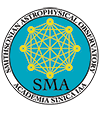|
Introduction:
Observationally, massive stars are important for our understanding of all star formation activity. Their high luminosities are our only means of tracing active star formation beyond a few kpc distance in our own Galaxy to deep into the early universe. Massive stars dominate the evolution of the interstellar medium through their energy output, ionizing radiation, supernovae explosions and heavy element enrichment. Main sequence massive stars emit most of their luminosity beyond the blue visual spectrum and as tracers of star formation are best studied at short wavelengths. Their powerful winds and ionizing radiation produce a host of energetic processes in the surrounding ISM that are also best studied at shorter wavelengths from the visual to the X-ray. However, when it comes to their formation, the situation is different.
Young massive stars are found deeply embedded within dense regions or cores of giant molecular clouds. The obscuration of this overlying material generally makes the detection of massive protostars impossible at wavelengths short of the mid-IR. Observations at long wavelengths require large aperture telescopes for high angular resolution. Furthermore, young massive stars are mostly associated with the Galactic spiral arms such as the Perseus arm at 2 kpc, and the molecular ring beyond 4 kpc. The combination of large distances and the long observing wavelengths make radio interferometers such as the SMA uniquely capable to study massive star formation. Among the several radio interferometer observatories, the SMA has some distinct advantages.
The SMA can observe the dust in cold molecular clouds at wavelengths below 1 mm, near the peak of the steeply rising black-body spectrum. The increased brightness at submm wavelengths means that the SMA can observe dust at higher angular resolution than other radio interferometers operating at 3mm wavelengths where the dust emission is not as bright. The dust continuum is important as a tracer of mass in molecular clouds and in polarized light of magnetic field direction. The increased spatial detail allows the SMA to resolve ambiguities present in single-dish and longer wavelength millimeter interferometer observations.
The submm wavelengths of the SMA are also advantageous in spectral line studies. Young massive stars and protostars have high enough luminosities to heat the surrounding molecular gas to high enough temperatures to populate the upper rotational: states and lower vibrational states of many observable molecules. Observations of molecular lines at high excitation energy can be used to isolate emission from the high temperature gas close to the massive stars and extract information on spatial scales smaller than the angular resolution.
Thus the SMA is naturally suited for observations of massive star formation and attracts many proposals in this field. Of the 204 refereed SMA publications 49, or 25%, are devoted to massive star formation. These SMA publications contribute to our understanding of a number of topics in high mass star formation that together address the central question: how is high mass star formation different from the formation of solar-mass stars.
» Next Page: What initial conditions form massive stars?
« Previous Page
SMA Research
| 
